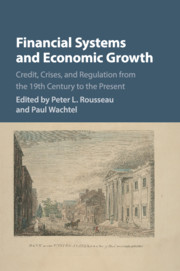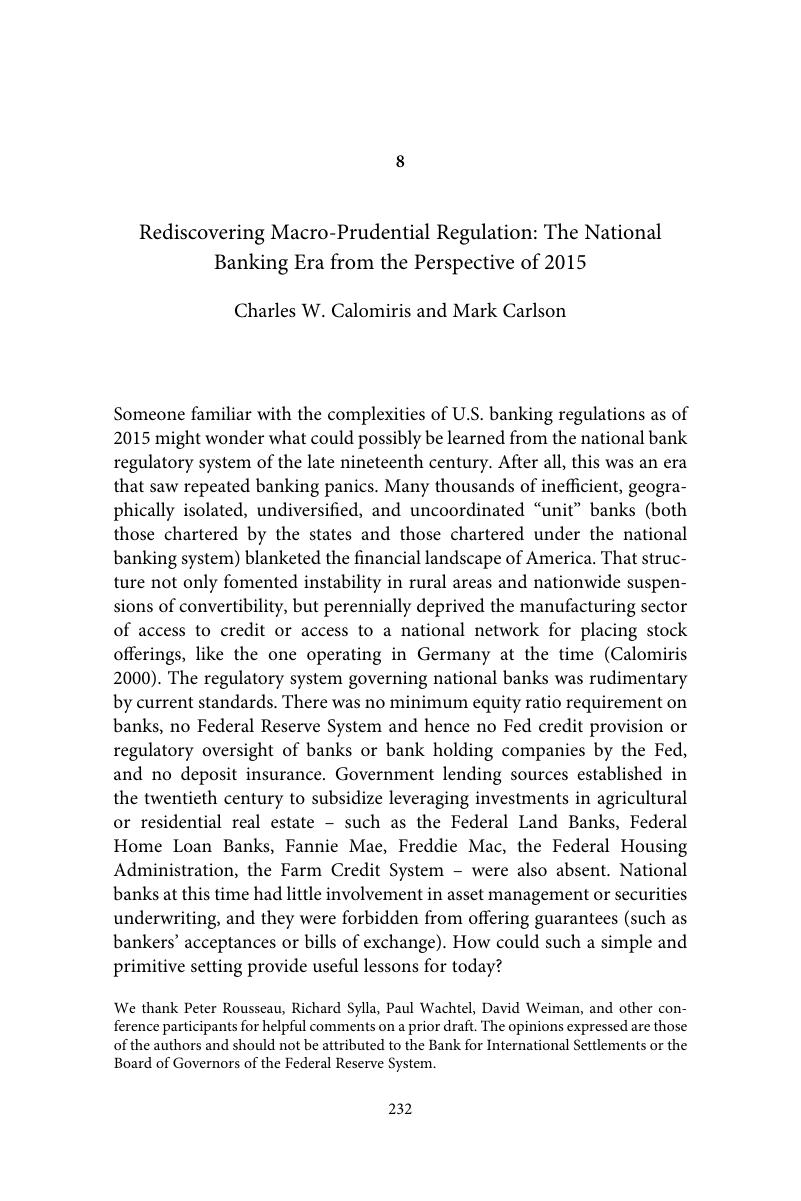 Financial Systems and Economic Growth
Financial Systems and Economic Growth Book contents
- Financial Systems and Economic Growth
- Studies in Macroeconomic History
- Financial Systems and Economic Growth
- Copyright page
- Dedication
- Contents
- Contributors
- Discussants at the Conference
- Introduction
- 1 Growing Up to Stability? Financial Globalization, Financial Development, and Financial Crises
- 2 Episodes of Financial Deepening: Credit Booms or Growth Generators?
- 3 Financing U.S. Economic Growth, 1790–1860: Corporations, Markets, and the Real Economy
- 4 Banks and Democracy
- 5 Financial Systems, Economic Growth, and Globalization in the Era of the Cold War
- 6 Reputation, Regulation, and the Collapse of International Capital Markets, 1920–1935
- 7 Protecting Financial Stability in the Aftermath of World War I: The Federal Reserve Bank of Atlanta’s Dissenting Policy
- 8 Rediscovering Macro-Prudential Regulation: The National Banking Era from the Perspective of 2015
- Index
- References
8 - Rediscovering Macro-Prudential Regulation: The National Banking Era from the Perspective of 2015
Published online by Cambridge University Press: 06 October 2017
- Financial Systems and Economic Growth
- Studies in Macroeconomic History
- Financial Systems and Economic Growth
- Copyright page
- Dedication
- Contents
- Contributors
- Discussants at the Conference
- Introduction
- 1 Growing Up to Stability? Financial Globalization, Financial Development, and Financial Crises
- 2 Episodes of Financial Deepening: Credit Booms or Growth Generators?
- 3 Financing U.S. Economic Growth, 1790–1860: Corporations, Markets, and the Real Economy
- 4 Banks and Democracy
- 5 Financial Systems, Economic Growth, and Globalization in the Era of the Cold War
- 6 Reputation, Regulation, and the Collapse of International Capital Markets, 1920–1935
- 7 Protecting Financial Stability in the Aftermath of World War I: The Federal Reserve Bank of Atlanta’s Dissenting Policy
- 8 Rediscovering Macro-Prudential Regulation: The National Banking Era from the Perspective of 2015
- Index
- References
Summary

- Type
- Chapter
- Information
- Financial Systems and Economic GrowthCredit, Crises, and Regulation from the 19th Century to the Present, pp. 232 - 282Publisher: Cambridge University PressPrint publication year: 2017
References
- 1
- Cited by


